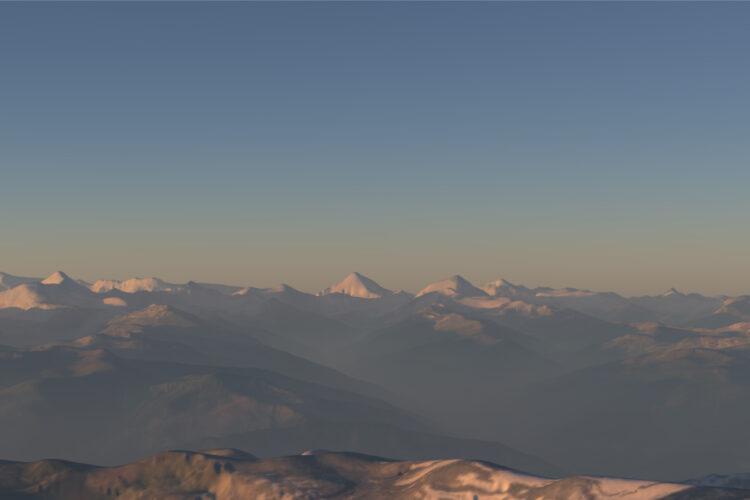A Fitted Radiance and Attenuation Model for Realistic Atmospheres
- August 2021
- Proceedings of SIGGRAPH • ACM Transactions on Graphics
Abstract
We present a fitted model of sky dome radiance and attenuation for realistic terrestrial atmospheres. Using scatterer distribution data from atmospheric measurement data, our model considerably improves on the visual realism of existing analytical clear sky models, as well as of interactive methods that are based on approximating atmospheric light transport. We also provide features not found in fitted models so far: radiance patterns for post-sunset conditions, in-scattered radiance and attenuation values for finite viewing distances, an observer altitude resolved model that includes downward-looking viewing directions, as well as polarisation information. We introduce a fully spherical model for in-scattered radiance that replaces the family of hemispherical functions originally introduced by Perez e.a., and which was extended for several subsequent analytical models: our model relies on reference image compression via tensor decomposition instead.
Source code download
For now, we offer two versions of the model for download.
The first version is the full model discussed in the paper, with all observer altitudes, full spectral range (including UV), the polarisation component, and the matching transmission function. Both the data file with the fitted coefficients and source code that demonstrates how to access the data in the model are provided.
Please note that we will also release ART 2.1 in the near future (August 2021), which will feature a “live” version of this model (that is, it will provide a working example of how to use it in a path tracer). The example source files in the folder are taken from this version of ART, and use the conventions of that rendering toolkit. They should contain enough information on how to access the data in the model to enable integration into other systems.
Please also note that we plan to provide smaller versions of the model in the near future, with only the visible spectral range included in the data file, without the polarisation component, and a reduced range of observer altitudes.
The second version we offer for download now is not discussed in the paper, and is provided here as a convenience for those rendering systems which currently already use the hemispherical 2012 Hošek model. As a drop-in replacement for these systems, we offer a ground level only version of our model. The data file for this is much smaller than for the full model, and the example access functions do not take observer altitude as input parameter. The main advantage over the 2012 Hošek model is that in addition to generally increased realism, this can also provide after sunset sky dome patterns.

